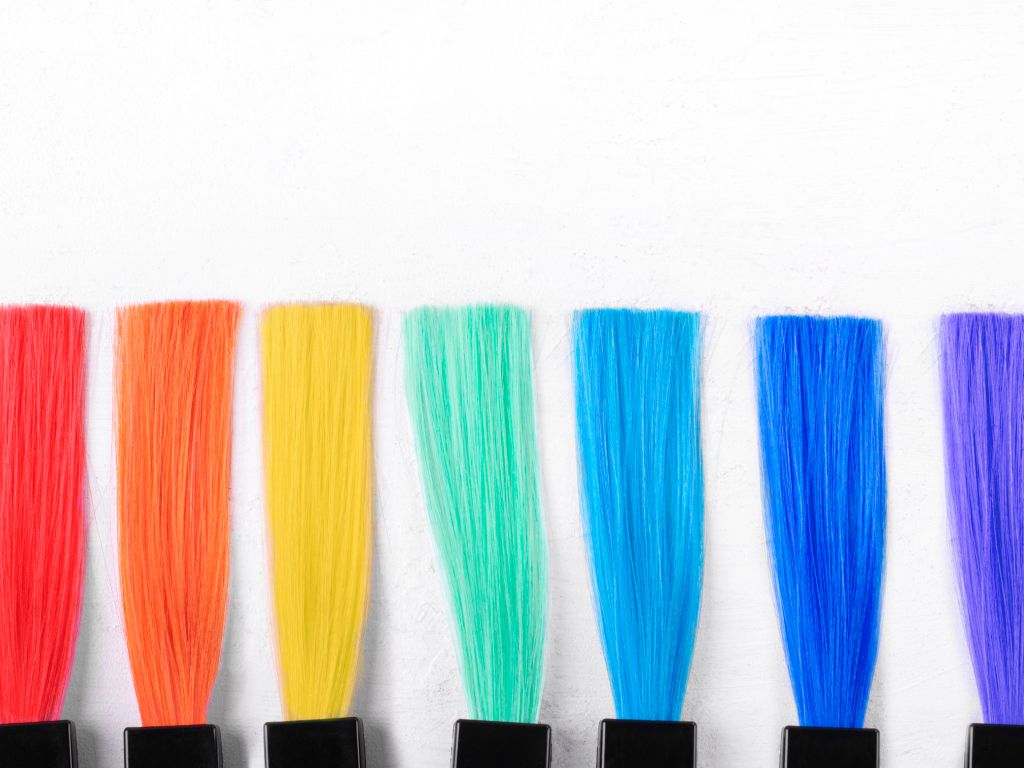Dye-ing to Know: Should You DIY Your Hair Color?
As lovers of all things hair, we often find ourselves combing the aisles of every Target, drug store, Ulta and Sephora we find ourselves inside, checking out all the latest and greatest. Lately we’ve noticed a real glow-up in the hair dye aisle, no longer the same old brands that have been on the market for decades. There are now options for at-home glosses, temporary colors, semi, demi, and fully permanent colors and bleaches, along with every color under the sun. With all the new options on the market, we’ve been thinking about revisiting the DIY hair dye days of our youth, but wanted to do a *BIT* more research (read: any research at all), and now we’re sharing our learnings with you: the pros and cons of dying your own hair. And, IF you choose to dye your own hair, we’re giving you the essential tips to get the best results.
The pros of dying your hair at home:
Cost-Effective:
One of the primary advantages of DIY hair dyeing is the cost savings compared to salon treatments. Home hair coloring kits are generally more affordable, making it an attractive option for those on a budget.
Convenience:
Home hair dyeing allows you to set your own schedule. There's no need to book appointments or spend hours at the salon. You can color your hair whenever it suits you, saving time and effort.
Privacy:
For some, the idea of having a personal hair coloring session at home is appealing. You can experiment with different looks in the comfort and privacy of your own space.
Variety of Options:
DIY hair dye kits come in a wide range of colors and styles, giving you the flexibility to try different shades without commitment. This variety is especially beneficial for those who enjoy expressing their creativity through their hair.
And now, the cons:
Skill and Experience:
Achieving professional-looking results requires a certain level of skill and experience. Without proper knowledge of techniques and color mixing, DIY hair dyeing can lead to uneven color, streaks, or unexpected hues.
Potential for Damage:
Home hair coloring products may contain chemicals that, if not used correctly, can damage your hair. Over-processing or leaving the dye on for too long can result in dryness, breakage, and other undesirable outcomes.
Limited Expertise:
While at-home kits provide instructions, they can't replace the expertise of a professional colorist. Complex color corrections, highlights, or intricate styles may be challenging to achieve without professional guidance.
Color Mismatch:
Colors displayed on the box might not always match the end result, especially if you're covering existing color or transitioning between shades. This can be disappointing and may necessitate corrective measures.
Tips for success:
Read and Follow Instructions:
This may seem obvious, but carefully read the instructions provided with the hair dye kit. Do this before you start opening bottles or mixing anything. Follow the recommended steps, including patch tests, to avoid adverse reactions.
Choose the Right Shade:
Consider your natural hair color and skin tone when selecting a shade. If in doubt, opt for a slightly lighter color, as it's easier to go darker in subsequent attempts.
Protective Measures:
Use petroleum jelly or a barrier cream around your hairline and ears to prevent skin staining. Wear an old shirt or use a salon cape to protect your clothing.
Timing is Crucial:
Follow the recommended processing time and set a timer. Leaving the dye on for too long can result in damage, while not leaving it on long enough may lead to uneven color.
Invest in Quality Products:
Choose reputable hair dye brands known for quality and conditioning properties. This can help minimize damage and enhance the longevity of your color.
Dyeing your hair at home offers flexibility and cost savings, but it comes with its share of challenges. By weighing the pros and cons and following expert tips, you can increase your chances of achieving salon-worthy results in the comfort of your own home. Whether you're a seasoned DIY enthusiast or a first-timer, the key is to approach the process with caution, patience, and a commitment to care for your hair.

